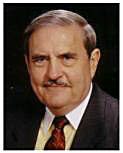Think About It
In 1792, the dollar of this country was pegged to silver and gold, or a bi-metallic standard. Dollars could be exchanged with the government on demand for a set amount of gold or silver. In 1862, because of the Civil War, the government issued paper money without metallic backing for the first time. After the war ended, a financial panic ensued. In 1875, the link to metal was re-established. In 1900, the bi-metallic standard was abandoned, and the dollar was made equal to gold, at $20.67 per ounce. In 1933, Franklin Roosevelt passed a law outlawing Americans owning gold, with the government redeeming all of it. The next year, he re-valued gold to $35 per ounce, thus de-valuing the dollar by 41% overnight. But, still, it took World War II to end the depression.
By the end of World War II, the United States was recognized as the strongest free country in the world, with most of the world’s gold. During 1944, the allied countries all met in Bretton Woods, New Hampshire to devise a way to rebuild the world economy. It was agreed the U. S. dollar would be fixed at $35 per ounce of gold, and all nations would peg their currency to it. The United States would now redeem U. S. dollars in gold for all nations at $35 per ounce. The dollar had now replaced the British pound sterling as the world standard. But the U. S. was soon to become a consumer rather than a producer, running huge trade deficits with other countries.
By 1961, with U. S. gold reserves falling fast, John F. Kennedy led in forming the “London Gold Pool”. The U. S. would match gold contributed by 8 other nations, and deposit it at the Bank of England. The Bank of England would buy and sell gold into the market to keep $35 per ounce stable, within 20 cents. Redemption demand continued to rise! In 1968, under LBJ (guns and butter), there was an international run on U. S. gold. England, at the request of the U. S., actually closed the London gold market for 2 weeks. When it re-opened, there was a 2 tier gold market. Central banks would continue to honor the $35 price to each other, but the private gold market would be allowed to find its own level. Then, in 1971, foreign governments requested redemption of another $3 billion U. S. dollars. Richard Nixon removed the dollar from the Bretton Woods agreement; refusing to redeem other nation’s dollars for gold, and effectively taking the dollar off the gold standard. Before long, U. S. authorities reached an agreement with Saudi Arabia, the world’s largest oil producer, to sell oil for U. S. dollars, exclusively, for all worldwide transactions. This means U. S. dollars are figuratively backed with OPEC oil rather than gold. Thus was born the “petrodollar”. In return, the U.S. promised to protect the OPEC countries from foreign invasion or domestic coup. Remember Kuwait?
But, in 2000, Saddam Hussein of Iraq, announced his oil would be sold only for Euro’s, not U S dollars. Shortly thereafter, he switched his $10 billion UN reserve fund from dollars to Euro’s. Since then, the Euro has re-valued upwards from 82 cents to $1.33 against the US dollar. Iraq has the world’s 4th largest oil reserve. If all 11 OPEC countries switched to the Euro for oil sales, the dollar would probably deflate another 20 to 40%. Could this be seen as a problem warranting an invasion? About 2 months after Saddam’s fall, Iraq oil sales and its UN reserve fund both reverted to the U. S. dollar.
Neighbor Iran has the world’s 3rd largest oil reserve. Historically, oil has been traded on only 2 exchanges. The U. S. NYMEX, and the British IPE. Iran is setting up a new oil exchange that will trade in Euro’s. It is called the Iranian Oil Bourse (French for exchange). What might this do to the value of the U. S. dollar? What would be its effect on U. S. / Iran relations?
Monday, October 1, 2007
Subscribe to:
Post Comments (Atom)

3 comments:
Interesting article. Where are the rest of the candidates on the poll box? Seem to be missing a few.
i very enjoy your writing kind, very attractive,
don't quit as well as keep penning in all honesty , because it just simply that is worth to follow it,
excited to find out much more of your web content, have a great day!
Hello friend amazing and very interesting blog about THE GOLD STANDARD I really enjoyed reading this blog and I would like to have any update about it, thanks for sharing!!
Post a Comment